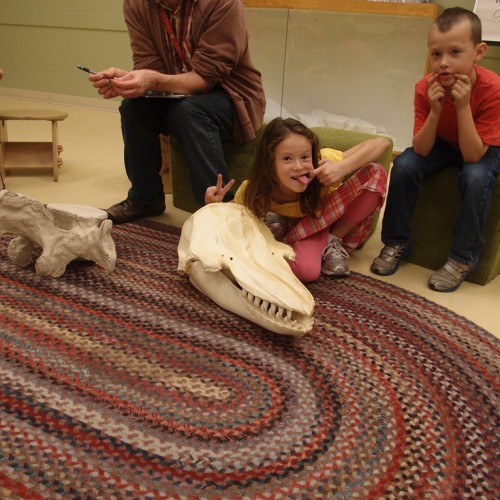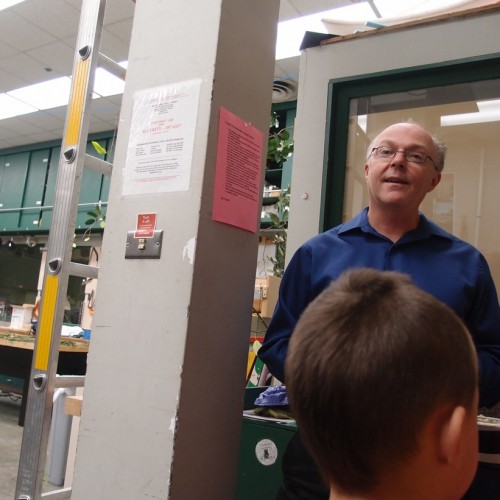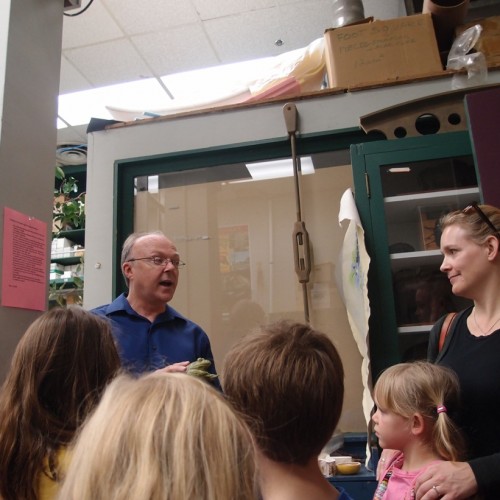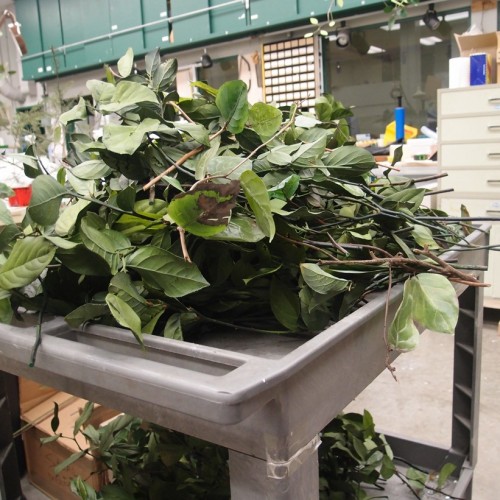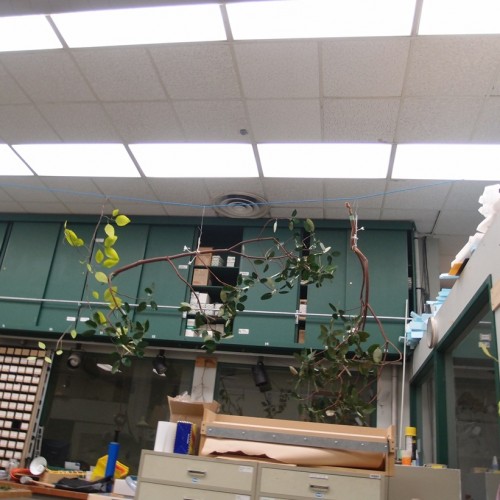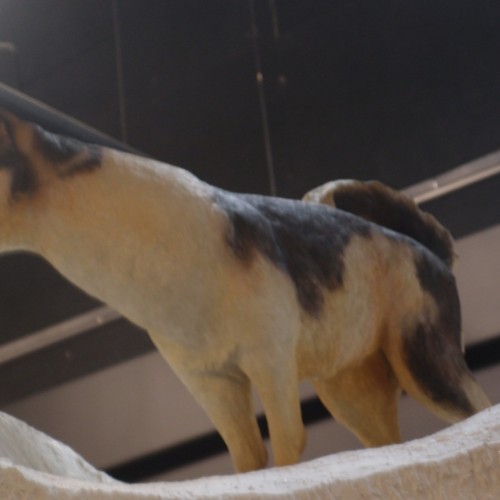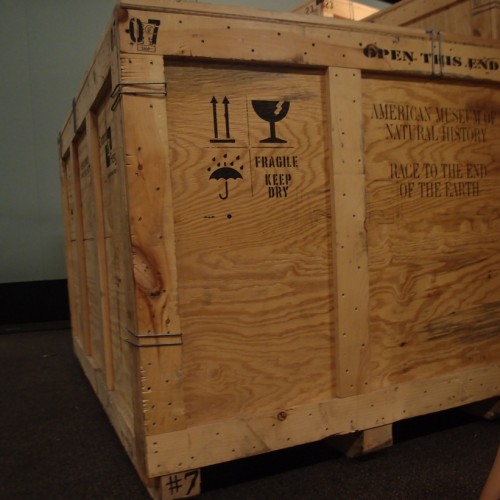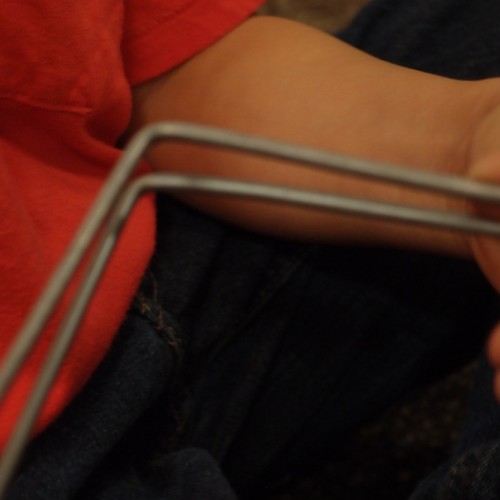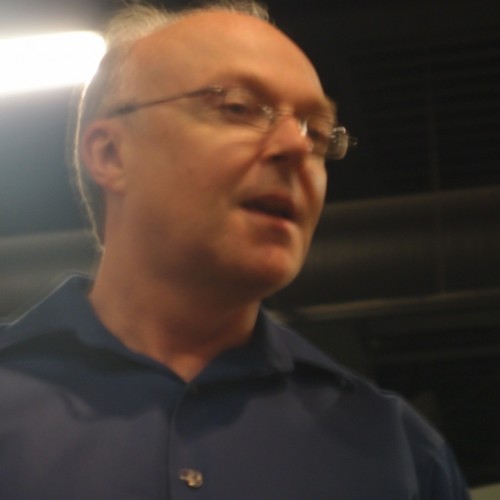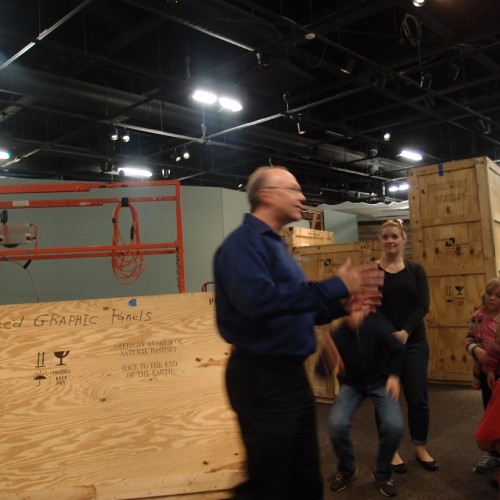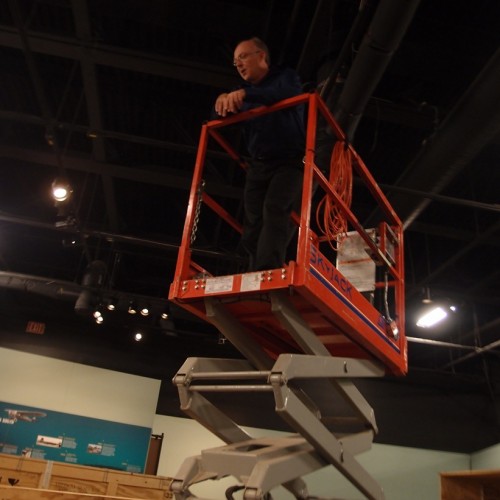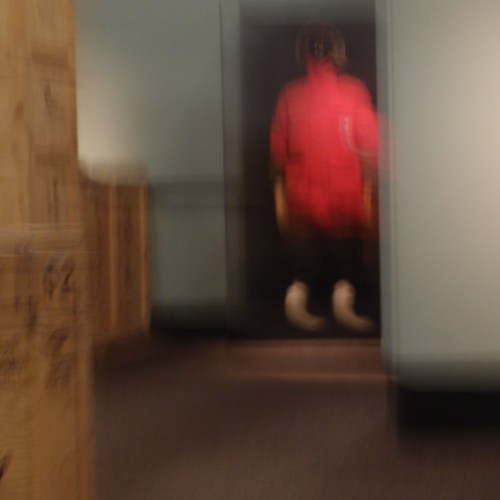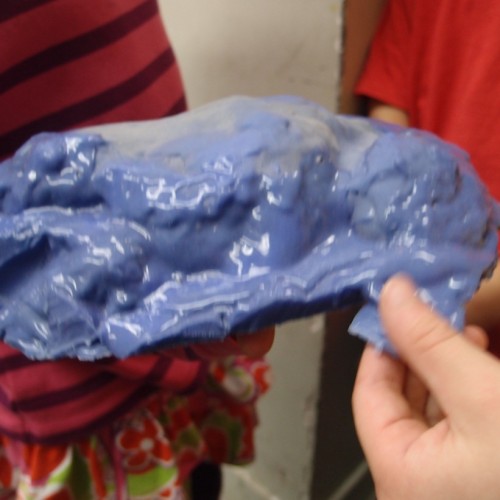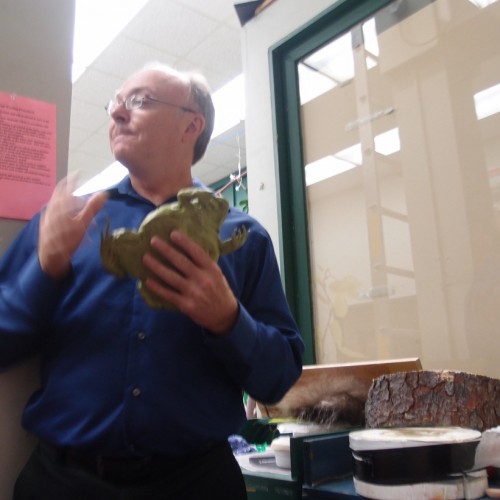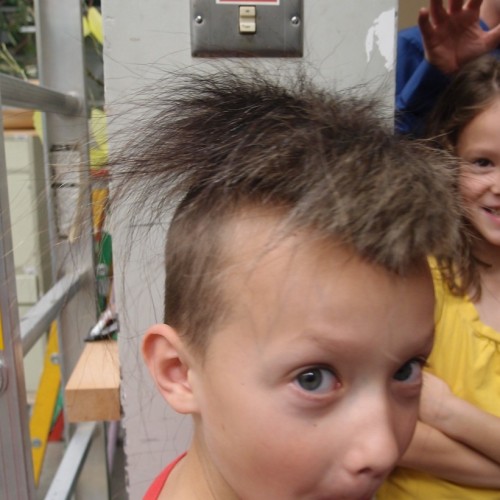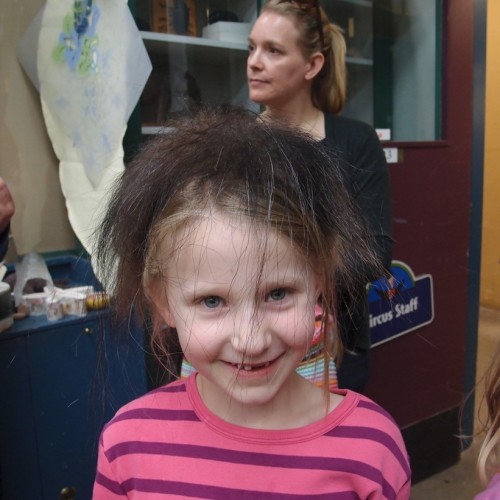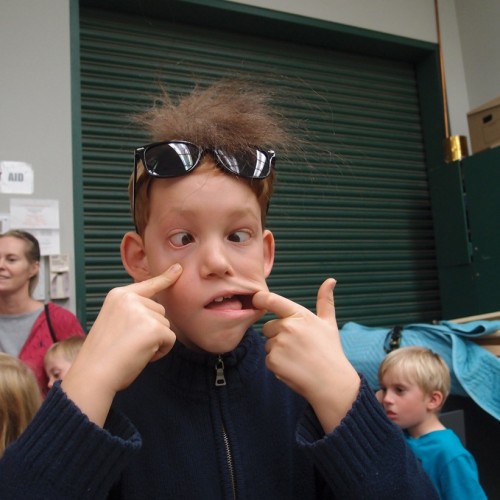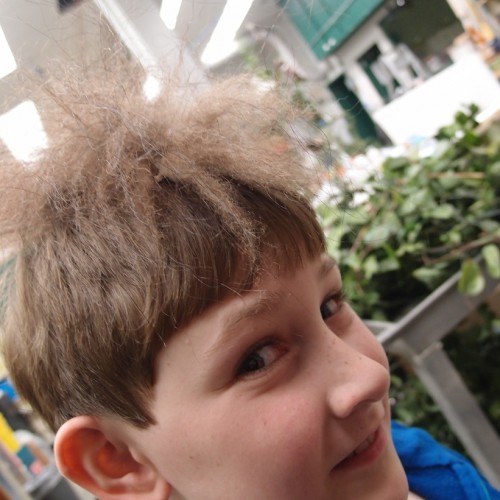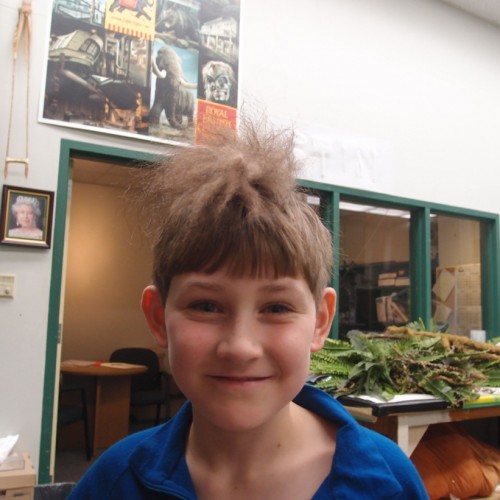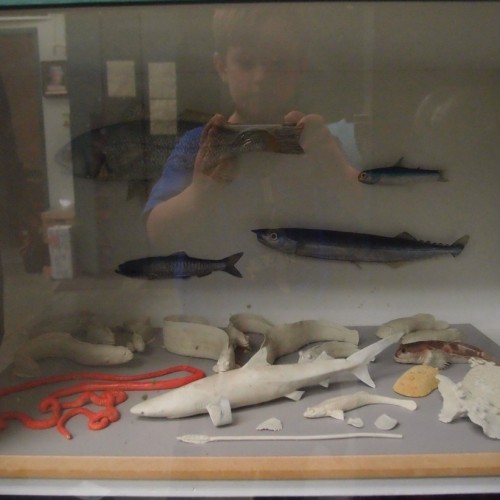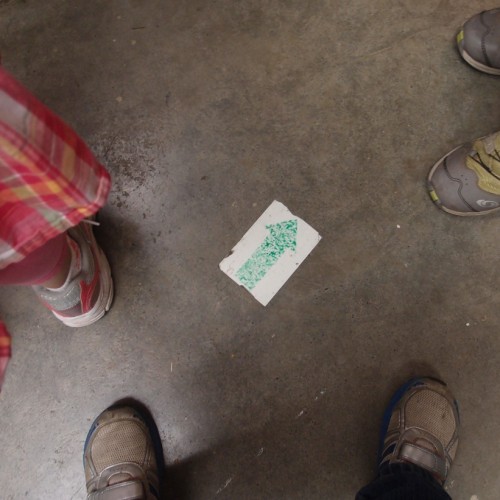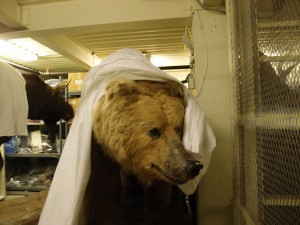
Week #3- Mark Dickson, Head of Exhibitions
Kids’ Club started off this week by one of our newer kids in the club saying, “Is that a dinosaur?” while looking at a model of a whale skull that we have in our Student Lunchroom. Good question, and one that fits perfectly with this week.
Because this week we meet Mark Dickson, one of the masterminds behind all of the extraordinary things that are imagined and built and assembled and placed within the galleries of the Royal BC Museum. It was not a real whale skull that we were looking at, but a model. So something that is created from a real specimen, made to look like the real thing. Something that Mark might make.
The skull became part of our introduction period.
Is it real? Why do you think it’s not real? Is it the material that gives it away? The weight?
Lots of good sleuthing going on.
After introductions we went to look for Mark down in his studio. Here Mark talked about the work that he and his team does. He said basically everything you see up stairs is pretty much built by his team, or exhibit arts and design teams from years ago.
Mark showed us how they are currently cleaning and restocking much of the forest diorama area up in the Natural History gallery. That is why there are so many branches and leaves in the studio.
But they are also in the process of taking down the Race to the End of the Earth exhibition. So he said we could go up and look…so we did.
It sure looks different up there than just a couple days ago when visitors were still taking it all in. No more penguins, and a whole bunch of crates. And one lost dog. Mark talked about the dog that is on top of the ice house in the exhibition, and how it is made out of a combination of plastic and clay. So another model. But this model wasn’t made by Mark and his team. Race to the End of the Earth is a traveling exhibition, so all the parts are being put in crates and will be sent to the next lucky museum that gets to show it.
I can’t help thinking that this is a lost dog though. Hopefully it finds a crate to call home!
Speaking of crates. Mark told us that this exhibition has about 130 crates, and that sometimes a single crate with objects inside can be as heavy as a small car.
One kid asked what the metal pieces were that were on top of the crates. Mark took one off and passed it around. It’s a bracket to hold the top of the crate on. Such a little thing for such a big box.
Mark also showed us the fork lift that gets him high up into the ceiling to changes lights. Needless to say, all the kids wanted to go up into it as well. Just motivation to someday work in a museum!!
I was struck by this photo that someone took. It is quite spooky, like a ghost from the exhibition is hanging around.
So we made our way back down to the Exhibit Arts studio, where Mark showed us how they made a model of a bullfrog. It involve this
and a real bullfrog in the freezer…in order to get this
Then he talked about the Woolly Mammoth in the Natural History gallery, and how they made the fur from musk ox fur. The kids thought that musk ox would also make for a good hair piece. Lots of great mohawks.
Since Mark helps decide on what exhibitions come to the Royal BC Museum, the kids thought that an exhibition that combines animals together would be really cool. Like a half beaver, half snake.
I agree, that would be cool.
So many good questions and ideas over the course of the hour…one good question from a parent was a question to Mark about how he started in his job. Mark said that he started out wanting to be an architect, but found his way into the museum instead working with the theatre program. And has enjoyed it ever since.
It seems like he also is kind of like an architect as well…building worlds with wood and metal. And what amazing worlds the museum offers.
Two last photos- I love seeing what the kids notice through their photographs…
Next up, Dr. Tzu-I Chung, Curator of History. Until then.



